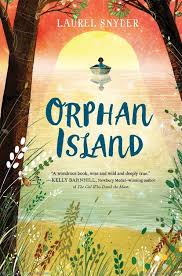
The Dollhouse Murders
Betty Ren Wright
Re-published by Holiday House, 2012 (the edition I read)
Originally published by Scholastic, 1985
There’s always a certain amount of danger when reading a book that you are nostalgic about. Is it worth that risk that it might not live up your memories? And if it doesn’t, can you in good conscience continue to promote it as a personal favorite, one that others should read? The Dollhouse Murders is one of those books that I have very distinct memories of reading and being terrified and thrilled by it. It and Babysitters Club book #2 Claudia and the Phantom Phone Calls pretty much made me the horror/suspense fan I am today. So when I was asked to give the name of my favorite children’s or YA horror book and this choice would be made very public, I decided to reread The Dollhouse Murders to see if it held up to my memories and if I were willing to declare it my favorite, as I definitely would have at age 8 or so.
In The Dollhouse Murders, after her developmentally delayed sister ruins an afternoon at the mall, Amy runs away to her aunt’s house and ends up striking a deal to stay with Aunt Clare in the house where Amy’s great grandparents lived and raised Aunt Clare and Amy’s father. Amy discovers a dollhouse in the attic that is an exact replica of the house, complete with two adult dolls and a boy and a girl doll to represent the family. Amy is delighted at first but when she notices that the dolls are moving by themselves, the lights in the dollhouse are turning themselves on and off, she becomes scared, naturally. It becomes even more terrifying when she learns that her great grandparents were murdered in the house and the dolls seem to be recreating the crime scene. The murderer was never caught. Could the dollhouse be trying to tell Amy something? Sharing some information to solve the mystery of the murder? Yep, pretty much.
This book is a perfect example of how middle-grade horror should be. It has a few suspenseful scenes, a high creep factor with the old house, the attic, and the dolls, but the characters are never in any real danger. While it talks about murder, there is no gore or violence; that all happens in the past and is only hinted at. And while the murders seem like the main story, The Dollhouse Murders is much more about family relationships, the secrets we keep, and the uncertainties of making and keeping friends as a tween. I was surprised by how much I still liked it, despite a pretty safe, anti-climactic ending.
One last thing about Amy’s sister LouAnn. She is developmentally delayed, and aside from the use of the word “retarded” one time in the book (it was written in the ’80s after all, though they should have fixed it in the 2012 edition), LouAnn is written with great respect by the author, I felt. She is key in solving the mystery and her relationship with Amy, while strained, grows throughout the story. A fully abled little sister would have sufficed but Wright chose to write her as disabled but not helpless. While diverse writing has come a long way since 1985, I really appreciated the inclusiveness of LouAnn’s character.
I didn’t end up naming The Dollhouse Murders as my favorite children’s horror book. Instead I opted for The Witches by Roald Dahl, which is pretty much my all-time favorite children’s book that also just happens to be horror.
Fun fact: there was a made-for-TV movie based on The Dollhouse Murders in 1992.
Read alikes/some other middle grade horror-mystery-suspense I read as a ’90s kid
The Face on the Milk Carton by Lois Duncan
Wait Till Helen Comes by Mary Downing Hahn
All the old Nancy Drew books with the yellow covers by Carolyn Keene
The Headless Cupid by Zilpha Keatley Snyder
Welcome to Dead House by R.L. Stine











